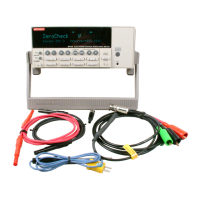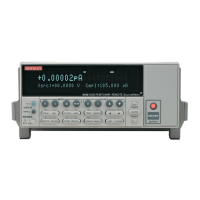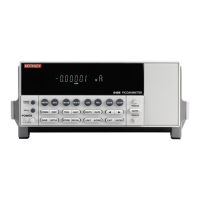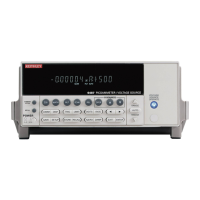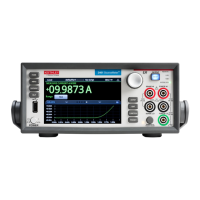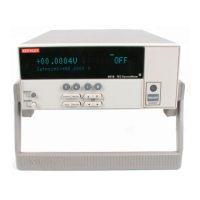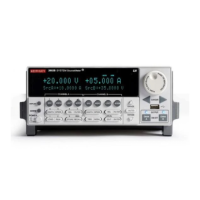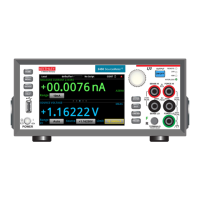Digital I/O, Analog Outputs, and External Feedback 11-11
External feedback
The external feedback function provides a means to extend the capabilities of Model 6514
electrometer to such uses as logarithmic currents, non-decade current ranges, as well as non-
standard coulombs ranges. The following paragraphs discuss the basic electrometer input cir-
cuitry and methods to implement these functions.
Electrometer input circuitry
A simplified diagram of the electrometer input in the external feedback mode is shown in Fig-
ure 11-7. An input current applied to the inverting (-) input of the op amp is nulled by a current
feedback through the internal feedback network made up of R
FB
and C
FB
. Because the output of
the op amp appears at the preamp out, this internal network can be replaced by an external net-
work connected between the preamp output and input HI connections. When using external
feedback, the following factors must be taken into account:
1. The maximum current value that can be supplied by the preamp output is 20mA in amps
and ohms (1mA in volts). The maximum voltage span in external feedback is ±20V.
2. The input impedance in the external feedback mode is given by the relationship Z
IN
=
Z
FB
/A
V
, where: Z
FB
is the impedance of the external feedback network, and A
V
is the
open-loop gain of the electrometer (typically greater than 55×10
6
). Note that the input
impedance is Z
IN
= 10MΩ || Z
FB
when zero check is enabled.
3. The voltage at the preamp out terminal is given by the formula:
V = -IZFB
4. Any feedback elements should be housed in a suitable shielded enclosure (see “Shielded
Fixture Construction” below). Insulators connected to input HI should be made of Teflon
or other high-quality insulating material and should be thoroughly cleaned to maintain
the high input impedance and low input current of Model 6514. If these insulators
become contaminated, they can be cleaned with methanol and then with clean, pressur-
ized air.

